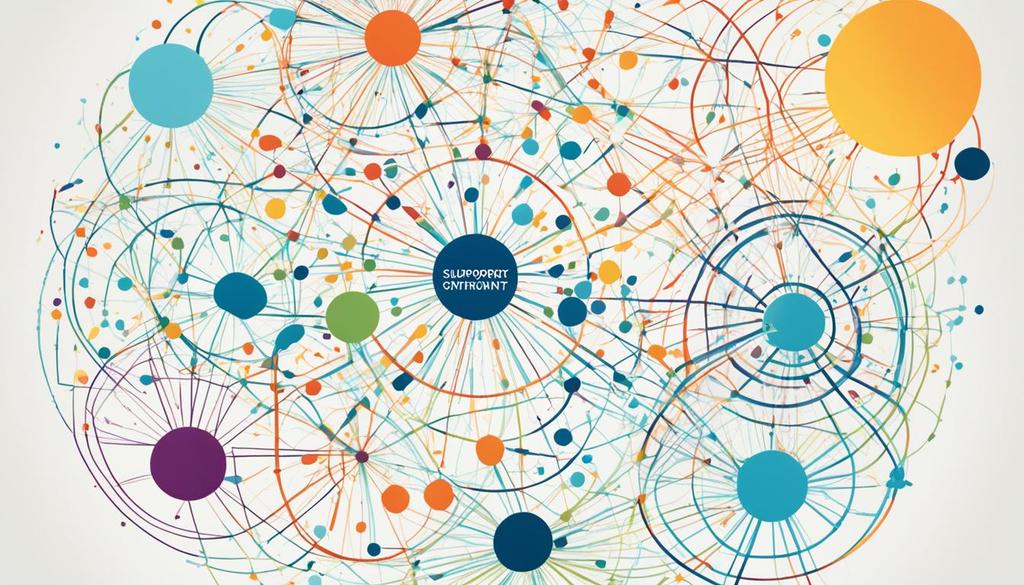In an era where physical health often takes the spotlight, have we given ample attention to the silent, inexorable challenges of mental health? There’s an invisible epidemic upon us, one that thrives in silence and flourishes under neglect. Mental health awareness is more than a buzzword; it’s a clarion call to acknowledge and address the intricacies of our psychological well-being. With the right mental health support and resources, we stand at the precipice of fostering a new era—where the mind is not only recognized but nurtured with the same vigilance as the body. But how can we ensure individuals receive the support they need, and what makes mental health resources truly effective?
Mental health awareness is catalyzing change, shaping how society responds to illnesses of the mind. Advocating for mental health does not merely involve awareness but also comprehending the profound impact an attentive support system can provide. It’s about creating spaces that empower individuals to seek help, share their experiences, and access the necessary resources for recovery. Through understanding and empathy, we can cultivate a society that uplifts mental health as an essential component of human flourishing.
In the journey to comprehensive mental well-being, what are the pivotal steps we must take to ensure that every cry for help is met with a legion of support? As we delve into the importance of mental health awareness, let us reflect on our role and the collective effort required to bridge the gap between suffering in silence and speaking out in hope.
Key Takeaways
- The role of mental health awareness in fostering an inclusive and understanding society.
- Importance of mental health support systems and how they enable individuals to seek help.
- Essential mental health resources and how accessibility can influence outcomes.
- The interconnection between mental health and overall well-being.
- How individual roles contribute to a holistic approach to mental health advocacy.
Understanding Mental Health and Its Impact
The landscape of mental health education has evolved significantly, yet the importance of cultivating an intricate understanding of mental health remains paramount. At its core, mental health encompasses a broad spectrum that ranges from the nuances of psychological well-being to the challenges presented by various mental health disorders. It’s an inextricable part of our collective human experience, influencing every aspect of life, from personal growth to societal development.
Mental health impact is profound and far-reaching, affecting not only the individual but also radiating to families, communities, and workplaces. Overcoming the stigma attached to mental health issues is a persistent hurdle, but through diligent education and open discourse, we can dismantle misconceptions and uncover the objective reality: mental health concerns are universal and can touch anyone, irrespective of age, gender, or socioeconomic status.
Recent mental health statistics paint a picture of urgency and the need for action. According to the National Institute of Mental Health, nearly one in five U.S. adults live with a mental illness, highlighting an undeniable call for a stronger foundation of mental health knowledge and support mechanisms. The following table illustrates some of the latest findings, underscoring the critical nature of mental health awareness within our society.
| Year | Percentage of Adults with Any Mental Illness | Percentage of Youth with Major Depressive Episode | Total Estimated Expenditure on Mental Health (Billions USD) |
|---|---|---|---|
| 2020 | 19.86% | 16.01% | 225 |
| 2021 | 20.30% | 17.07% | 238 |
| 2022 | 20.55% | 17.13% | 250 est. |
The correlation between societal health and mental well-being is undeniable. Effective mental health education is at the heart of preventative strategies, supportive interventions, and comprehensive care. As we navigate through the complexities of mental health, it becomes increasingly clear that an informed and empathetic approach is non-negotiable for fostering resilient and thriving communities.
We must continue to prioritize and invest in mental health by championing robust educational frameworks. These efforts not only aim to illuminate the intricacies of mental health but also aspire to normalize conversations around mental well-being, ultimately catalyzing a paradigm shift wherein mental health is embraced as an integral component of overall health.
The Importance of Mental Health Education
Education is the cornerstone upon which societies are built and through which crucial social changes are fostered. In the realm of mental health, the impact of education is both transformative and far-reaching. It is through informed dialogue and comprehensive educational strategies that the journey of breaking stigma and nurturing mental health advocacy begins. This foundational step paves the way for effective mental health initiatives that can reshape perspectives and policies alike.
Breaking the Stigma Associated with Mental Health
The battle against mental health stigma is waged on multiple fronts, but none more critical than the halls of education. Silence and misinformation have perpetuated negative stereotypes, making it imperative for schools, universities, and communities to engage in honest conversations. Shining a light on mental health challenges through education not only dispels myths but also empowers individuals with the knowledge to seek help without fear of judgment.
Integrating Mental Health into School Curriculums
The push to weave mental health education into the fabric of school curriculums is gaining momentum nationally. Yet, this movement faces significant hurdles, including varying state educational standards and limited resources. Despite these challenges, the benefits of introducing mental health lessons early on are clear. Students equipped with a sophisticated understanding of mental well-being are better prepared to develop resilience, empathy, and a more inclusive viewpoint towards their peers facing mental health issues.
Statistics and Insights on Mental Health
Analyzing mental health statistics offers a snapshot of the society’s wellness landscape, shedding light on rising mental health trends and fostering deeper mental health insights. The compilation and study of these data points are crucial in formulating responses to mental health challenges observed across various demographics.
Recent findings from the National Institute of Mental Health (NIMH) present that a significant portion of the population has faced a mental health disorder at some point in their lives, with varying degrees of impact on their day-to-day functioning. Meanwhile, the World Health Organization (WHO) has emphasized the dynamic nature of mental health, where personal, societal, and economic factors converge.
It is through understanding these figures that stakeholders can direct resources, tailor interventions, and promote policies upholding mental wellness. Here’s a look at some illustrative statistics:
| Year | Prevalence of Mental Health Disorders (% of Population) | Success Rates of Treatment Programs | Emerging Trends |
|---|---|---|---|
| 2019 | 19.2% | Successful in 40% of cases within 6 months | Increased use of digital health tools |
| 2020 | 20.6% | Successful in 45% of cases within 6 months | Rise in teletherapy consultations |
| 2021 | 21.5% | Successful in 50% of cases within 6 months | Heightened mental health awareness campaigns |
| 2022 | 22.3% | Successful in 55% of cases within 6 months | Expansion of community-based support initiatives |
These figures highlight critical demographic disparities, where socioeconomic status, race, and gender play influential roles in both the prevalence of disorders and the accessibility of treatment. It is clear that efforts to bridge these gaps must be intensified, ensuring equitable mental health support for all communities. Reflecting on these statistics does more than just inform — it compels action toward a more mentally resilient society.
Challenges in Mental Health Advocacy
Advancing the cause of mental health requires overcoming several obstinate obstacles that impede progress. With intricate connections between public policy and societal attitudes, mental health advocacy finds itself at a crossroads, seeking more efficacious pathways to effectuate lasting change in contemporary healthcare systems. As we strive towards improved mental health care, it’s crucial to examine the legislative frameworks and societal structures that shape the interventions for supporting vulnerable populations.
Addressing Public Policy and Legislation
At the legislative level, mental health policymakers confront a maze of complexities. The crux of the challenge lies in crafting comprehensive public policy that not only embraces the full spectrum of mental health issues but also ensures equitable access to care. As policymakers weave through the labyrinth of insurance protocols, budgetary constraints, and resource allocations, the goal remains to establish mental health parity—where mental health care receives the same priority as physical health care.

Current debates intensify around the urgent need for insurance reforms that fully cover mental health services, fostering a system where treatments are not considered ancillary but essential. Yet, this is no small feat. Legislative efforts, such as the Mental Health Parity and Addiction Equity Act, represent vital strides forward, but actualizing their principles into tangible outcomes often stumbles amid bureaucratic hurdles and competing interests on the political stage.
Supporting Marginalized and Vulnerable Populations
In the realm of advocacy, special focus is placed on supporting vulnerable populations. These include individuals whose socio-economic, cultural, or geographical circumstances create barriers to accessing mental health care. For these groups, advocates labor to ensure that mental health services are both comprehensive and culturally sensitive—a form of care that acknowledges the nuanced experiences of marginalized communities.
Creating culturally competent care frameworks involves training providers to recognize and respect the varied belief systems and social determinants that affect mental health. It means ensuring services are linguistically appropriate and sensitive to the diverse expressions of psychological distress across different cultures. At the heart of this challenge is a plea for inclusivity, where every individual, irrespective of their background, receives the support they need to thrive.
Mental Health Resources for Individuals and Families
Access to mental health resources is a critical component of a healthy society, yet many individuals and families often struggle to find the support they need. Recognizing the right avenues for mental health support is fundamental in facilitating timely and effective assistance. It’s important to highlight the range of services available to bolster family mental health and individual well-being.
For those seeking immediate assistance or needing urgent mental health support, crisis hotlines provide a confidential helpline. These services are often staffed by trained volunteers and professionals ready to offer support, guidance, and invaluable resources at any hour. Additionally, many community health centers and hospitals offer walk-in counseling services tailored to address acute and chronic mental health issues.
Community-based resources, particularly those focused on prevention and early intervention, are essential for maintaining family mental health. Support groups, both in-person and virtual, create supportive spaces where individuals can share experiences and coping strategies. These platforms can significantly reduce feelings of isolation and promote healing within a communal context.
It’s also important to underscore the significance of navigating the mental health care system. This includes understanding health insurance coverage, local mental health services, and the pathways to accessing specialized care when necessary. Seek out organizations that offer case management services to help cut through bureaucratic red tape, providing a smoother journey to recovery and support.
Navigating mental health systems should not be a convoluted process. Knowledgeable guidance can offer a lifeline to those reaching out for help, streamlining the path to recovery and fostering resilience within individuals and families.
- Crisis Hotlines for immediate assistance and emotional support
- Walk-In Counseling Services for acute mental health care
- Support Groups for shared experiences and community healing
- Case Management Services to help navigate the mental health care system
In conclusion, the tapestry of mental health resources available to individuals and families is both broad and nuanced. Whether it’s immediate crisis intervention, ongoing support, or assistance in health care navigation, the objective remains clear: provide accessible, empathetic, and practical mental health support to enhance the well-being of communities across the nation.
Identifying and Addressing Mental Health Disorders
The journey toward better mental health begins with the ability to recognize early warning signs. Being vigilant about mental health symptoms is pivotal for individuals and those around them. In the complexity of various emotional and psychological states, some patterns point more directly to potential mental health disorders. Highlighting these signs and understanding when to start seeking professional help can make a significant difference in managing and treating the condition effectively.
Common Signs and Symptoms
Though mental health disorders can manifest uniquely in each individual, there are common symptoms that should not be ignored. These can range from prolonged feelings of sadness or irritability, excessive fears or worries, to drastic changes in eating or sleeping habits. Observing these changes in oneself or a loved one can be the first step in identifying mental health disorders. The journey toward healing begins with recognition and understanding.

When to Seek Professional Help
Deciding to seek help is not always easy, but it is a courageous and critical step toward recovery. The moment daily functioning is significantly impaired – be it through disruption in work, relationships, or overall quality of life – it is time to reach out for professional support. Seeking professional help is crucial when dealing with persistent feelings of distress that seem overwhelming and unmanageable. Use the following table as a reference guide for recognizing when professional intervention might be necessary.
| Mental Health Symptom | Potential Disorder | Action to Take |
|---|---|---|
| Excessive sadness or despair | Depression | Consult a psychologist or psychiatrist |
| Extreme highs and lows | Bipolar Disorder | Seek a mental health evaluation |
| Unreasonable fears or avoidance | Anxiety Disorders | Talk to a healthcare provider about anxiety management |
| Difficulty concentrating | ADHD or other cognitive disorders | Discuss with a specialist to evaluate attention issues |
| Withdrawal from social interaction | Various potential disorders including depression | Contact a therapist to address social withdrawal |
Being knowledgeable about the mental health symptoms and the importance of seeking professional help empowers individuals to take control of their mental health journey. Remember, identifying mental health disorders is the first step; reaching out for help is the next, and often the most crucial. Mental health professionals are equipped to guide you or your loved ones towards paths of recovery and well-being.
Mental Health Tips for Everyday Wellbeing
Incorporating simple yet effective mental health tips into our daily routines can significantly enhance everyday wellbeing. Balancing various aspects of life while attending to our mental health requires a proactive approach. By adopting these mental health practices, individuals can maintain psychological resilience and improve overall quality of life. Here are actionable tips designed to foster mental and emotional balance:
- Mindfulness: Dedicate time to mindfulness exercises that cultivate awareness and rootedness in the present moment, aiding stress reduction and emotional regulation.
- Regular Exercise: Engage in physical activities that boost endorphins and improve mood, contributing to a more positive outlook on life.
- Adequate Sleep: Ensure a consistent sleep schedule to improve concentration, mood, and overall brain function.
- Social Connections: Cultivate supportive relationships and social interactions which can diminish feelings of isolation and stress.
- Stress Management: Develop coping strategies to effectively manage stress, such as deep-breathing techniques, meditation, or yoga.
- Positive Relationships: Invest in relationships that bring joy and comfort, fostering a network of care and support.
- Work-Life Balance: Strive for a balance between personal life and professional obligations to prevent burnout and maintain mental energy.
Implementing these strategies is a journey that may require adjustments and persistence. Begin with small changes and gradually incorporate more as they become habitual, leading to sustained mental health improvements.
| Practice | Benefits | Frequency |
|---|---|---|
| Mindfulness | Reduces stress, enhances focus, increases cognitive flexibility | Daily |
| Regular Exercise | Improves mood, decreases anxiety, enhances sleep quality | 3-5 times per week |
| Adequate Sleep | Supports brain health, improves mood and productivity | Every night (7-9 hours) |
| Social Connections | Builds a support network, decreases loneliness, boosts emotional wellbeing | As often as possible |
| Stress Management | Improves resilience, encourages a calm state of mind | As needed |
| Positive Relationships | Increases happiness, provides emotional support | Regular interaction |
| Work-Life Balance | Prevents burnout, encourages self-care, increases satisfaction | Continuous assessment |
Embrace these mental health practices to build a foundation for enduring health and happiness. Remember, taking a step towards better mental health is within reach for everyone.
Roles of Technology in Mental Health Support
The advent of mental health technology has transformed the landscape of psychological care, empowering patients and clinicians alike with innovative digital health tools and teletherapy services. These technological solutions have addressed traditional barriers to accessing therapy, offering flexibility and immediate support in a world rapidly adapting to virtual interactions.
Digital Health Tools and Apps
The proliferation of digital health tools has enabled a more proactive approach to mental health management. Apps designed to monitor moods, provide mindfulness techniques, and encourage positive behavioral changes have become instrumental in daily mental wellness practices. From self-guided cognitive-behavioral therapy (CBT) applications to mood trackers that analyze patterns, these tools embody the practical integration of technology in mental health support channels.
Teletherapy and Online Counseling
Teletherapy has risen to the forefront as a critical component of mental health care, especially highlighted during the COVID-19 pandemic when in-person services were disrupted. Online counseling platforms have not only made therapy more accessible but also ensured continuity of care in times of social distancing, preserving the therapeutic alliance between client and counselor without geographical constraints.
| Features | Benefits | Examples of Tools/Services |
|---|---|---|
| Mobile Mental Health Apps | Convenience, Self-monitoring, Skill-building | Headspace, Talkspace, Moodfit |
| Online Therapy Platforms | Accessibility, Affordability, Anonymity | BetterHelp, Amwell, Teledoc |
| Virtual Support Groups | Community Support, Shared Experience, Flexibility | 7 Cups, The Tribe Wellness Community |
| AI-Based Mental Health Bots | 24/7 Availability, Immediate Response, Consistency | Woebot, Wysa |
By embracing mental health technology in the form of digital tools and teletherapy, society paves the way for a future punctuated by accessible, personalized, and sophisticated mental health support mechanisms.
Mental Health Awareness in the Workplace
The nexus between mental health in the workplace and the overall productivity of a workforce cannot be overstated. Recognizing and addressing employee mental health issues not only supports individual wellness but also enhances the collective well-being of an organization. Progressive employers are increasingly implementing workplace well-being initiatives to ensure a holistic approach to employee health that goes beyond physical wellness.
In this context, proactive measures such as stress management seminars, flexible work arrangements, and access to counseling services have shown promising results. A supportive workplace culture opens dialogues on mental health, encouraging employees to seek help without fear of stigma.
Fostering an environment where employee mental health is openly supported can lead to reduced absenteeism, diminished healthcare costs, and improved morale.
Innovative companies are now integrating mental health into their corporate social responsibility strategies, understanding that a mentally healthy workforce is a key driver for success. This prioritization of mental health aligns with the growing societal emphasis on personal well-being, creating a ripple effect that extends beyond the office.
- Introducing mental health days
- Regular mental health training for managers
- Anonymous support hotlines
- In-house wellness programs
Case studies from reputable organizations show a compelling correlation between sound mental health policies and positive workplace outcomes. Companies that implement these practices not only report higher levels of employee satisfaction but also gain a competitive edge in employee retention and recruitment.
Moving forward, as businesses continue to navigate the complexities of a dynamic work environment, the emphasis on mental health awareness will likely become a benchmark for organizational excellence.
National and Global Mental Health Campaigns
Amidst a growing recognition of the importance of mental well-being, there has been a surge in mental health campaigns across the planet. These initiatives aim to shatter the stigma, disseminate knowledge, and empower individuals to seek support. From national strategies to efforts that span continents, the resonance of such movements cannot be overstated. They all converge on a common goal: making mental health care accessible and a priority within public discourse.

World Mental Health Day
At the forefront of these initiatives stands World Mental Health Day, observed on October 10th every year. Established by the World Federation for Mental Health, this day advocates for mental health education, awareness, and advocacy against social stigma. It creates a juncture for communities globally to share resources and experiences, hold discussions, and present new ideas for improving mental health care systems worldwide.
Movements and Initiatives for Change
Mental health movements have gained traction with the emergence of organizations like NAMI (National Alliance on Mental Illness) and campaigns such as #ChangeDirection and #EachMindMatters. These movements focus on changing perceptions, fighting for resources, and supporting those impacted. The interconnectedness of these initiatives forms a broader coalition in advancing the mental health agenda—impacting public policy, healthcare access, and societal attitudes.
| Campaign | Organizer | Objective | Global Reach |
|---|---|---|---|
| Bell Let’s Talk | Bell Canada | Combating stigma, improving access | International |
| Time to Change | Mind and Rethink Mental Illness | Encouraging open conversations about mental health | UK |
| Heads Together | The Royal Foundation | Support for mental well-being | UK with global influence |
| Okay to Say | Meadows Mental Health Policy Institute | Normalizing mental health topics | USA |
The collective impact of mental health campaigns has been instrumental in shaping public policies and expanding dialogue. World Mental Health Day serves as a spotlight that illuminates the path forward, while grassroots mental health movements are the steps we take to tread that path, ensuring the future is replete with hope, support, and a commitment to mental health for all.
Mental Health Initiatives in Local Communities
The very fabric of community mental health support is woven through the dedication and compassion of local mental health initiatives. These grassroots mental health programs are the underpinning of robust, resilient communities across the United States. Often initiated by non-profits and faith-based organizations, such initiatives are exemplary of a hands-on approach to societal wellness.
Grassroots mental health movements have emerged as critical players in the battle for mental well-being. They understand the local cultural landscape and are adept at tailoring their outreach to the needs of their specific demographic. It’s this local understanding that transforms community mental health support from a concept into an actionable plan with notable outcomes.
Local mental health initiatives know that one size does not fit all when it comes to health and healing. Their approach is often multifaceted, targeting various aspects of mental health through community engagement and patient-centric programs.
Here’s a focused look at the success of local initiatives:
- Local volunteers being trained to recognize mental health issues
- Community centers offering free or low-cost counseling services
- Outreach programs specifically designed for youth, elderly, and the underserved
- Partnerships between local businesses and mental health organizations to promote wellness
The cross-pollination between these local strategies contributes to a holistic community mental health support system where everyone has access to the care they need.
When local resources join forces under grassroots mental health initiatives, we witness the true potential of community action:
| Initiative Type | Services Provided | Impact Measurement |
|---|---|---|
| Peer Support Groups | Shared experiences, coping strategies, emotional support | Reduced isolation, improved recovery outcomes |
| School Outreach | Educational workshops, early intervention programs | Increased awareness, stigma reduction in young populations |
| Community Workshops | Stress management, mental health literacy | Empowered individuals, resilient communities |
| Collaborative Programs | Healthcare navigation, employment assistance | Enhanced quality of life, decreased financial barriers to care |
The incorporation of grassroots mental health efforts into the broader health care system is proving vital. It is a testament to the power of local actions in addressing expansive challenges. As these programs mature, the long-term benefits for individual and collective mental health are undeniable—proof that the seeds of compassion, when sown locally, can yield a harvest of well-being for all.
Bridging the Gap with Mental Health Support Networks
The prevalence of mental health issues has catalyzed the development of mental health support networks, which play a crucial role in connecting individuals with the mental health services they need. These networks are instrumental not only in providing immediate assistance but also in fostering long-term strategies that contribute to resilience and recovery.

One key type of network is based on peer support, where individuals who have experienced similar challenges provide comfort and guidance, creating a space for empathy and understanding. Another essential network is composed of professional networks including therapists, counselors, and psychologists who offer specialized interventions designed to address specific mental health issues.
- Peer Support Groups
- Professional Counseling Services
- Online Community Forums
Moreover, online communities have emerged as powerful platforms, allowing for anonymity and accessibility. They have proven to be a lifeline for many, especially those who may find it challenging to seek help in person due to stigma or geographical limitations.
| Type of Support Network | Impact on Individual’s Recovery | Impact on Accessibility of Services |
|---|---|---|
| Peer Support | Enhances understanding and gives a sense of belonging | Improves outreach and engages those reluctant to seek traditional help |
| Professional Networks | Provides professional, tailored interventions | Makes expert care more navigable and transparent |
| Online Communities | Offers ongoing support and flexibility in assistance | Extends help beyond geographical barriers |
The impact of these networks is significant, both on an individual and societal level. They reduce barriers to entry into the mental health care system and ensure that those in need have a variety of options to seek aid. The cumulative support network impact is a more cohesive, informed, and integrated approach to mental health care – one that acknowledges the unique journey of recovery for each individual.
Conclusion
The journey through the labyrinth of mental health awareness and advocacy underscores the pivotal strides humanity has made, and the distance still to be navigated. We have sifted through a constellation of topics, noting with optimism the tangible mental health progress achieved to date. From the thrust towards robust mental health education that punctures the stigma, to the blossoming of resources catering to diverse needs, our society is on an upward trajectory towards comprehensive well-being.
Yet, this is not a juncture for complacency, but rather a clarion call for advocating mental health with renewed vigor. The individual stories intertwined within the statistics, the policy dialogues, and the spirited campaigns serve as powerful reminders of why our action and dedication matter. As we continue to chart this course, a commitment to fostering mental wellness should be the touchstone in our dialogue, policies, and community endeavors. It is through this united and sustained effort that we can envisage and construct a framework of support that is inclusive, empathetic, and healing.
To encapsulate, as individuals, communities, and institutions, our joint responsibilities beckon us to not only prioritize mental health but to embrace it as fundamental to our societal fabric. We do so not only in recognition of the challenges faced by those with mental health conditions but as a testament to our collective resolve in nurturing a healthier, more understanding community—a community where the well-being of every individual is not an ideal to aspire to, but a reality to be lived each day.
FAQ
What is mental health awareness and why is it important?
Mental health awareness refers to the understanding and education pertaining to the various aspects of mental health, including disorders, well-being, and the overall impact on individuals and society. It’s important as it fosters support, reduces stigma, encourages help-seeking behavior, and underscores mental health’s role in overall well-being.
How does mental health impact individuals and society?
Mental health has a significant impact on various life aspects, including emotional, psychological, and social well-being. For society, it influences productivity, healthcare costs, and social harmony. Understanding this impact is crucial for developing effective support systems and policies.
What are some ways to break the stigma associated with mental health?
Breaking the stigma can be accomplished through education, open conversations, advocating for those affected, and promoting positive stories of recovery. Mental health campaigns and initiatives also play a pivotal role in altering public perception and reducing discrimination.
Why is it important to integrate mental health into school curriculums?
Integrating mental health into school curriculums is vital for early education on the subject, which can create a foundation for a stigma-free understanding and equip students with strategies to manage mental health challenges they or their peers may face.
What key statistics offer insight into the state of mental health today?
Key statistics from reputable sources highlight the prevalence of mental health disorders, demographic disparities, and trends in treatment efficacy, helping us understand the scope of issues and the progress towards better mental health care.
What are the challenges faced in mental health advocacy?
Challenges include addressing public policy and legislation that effectively oversees mental health care, ensuring access to resources for marginalized populations, and combating persistent stigma and lack of understanding within communities.
How can individuals and families access mental health resources?
Individuals and families can access mental health resources through counseling services, crisis hotlines, support groups, community-based programs, and available online directories that guide through the mental health care system.
What are common signs of mental health disorders and when should professional help be sought?
Common signs include significant changes in mood, behavior, or thoughts, and experiencing distress that impacts daily life. Professional help should be sought when these signs persist and interfere with one’s ability to function.
What are some practical tips for everyday mental wellbeing?
Tips for everyday mental wellbeing include practicing mindfulness, staying physically active, maintaining a balanced diet, getting adequate sleep, fostering positive social connections, and managing stress through healthy coping mechanisms.
What roles do technology and digital tools play in mental health support?
Technology provides digital health tools and apps for self-management of mental health, while teletherapy and online counseling make professional support more accessible and convenient, particularly for those with mobility or geographic limitations.
How can workplaces contribute to promoting mental health awareness?
Workplaces can contribute by creating supportive environments through well-being initiatives, providing access to mental health resources, offering training for managers, and promoting an open dialogue around mental health.
What are some significant mental health campaigns and their impacts?
Campaigns like World Mental Health Day and various mental health movements raise awareness, educate the public, facilitate discussions, and can influence policy changes to improve mental health care and reduce stigma.
What initiatives are effective at the local community level for mental health support?
Local initiatives that are effective include community mental health days, support groups, awareness workshops, and services provided by non-profits, which offer tailored support and reach diverse populations.
How do mental health support networks contribute to overcoming challenges?
Support networks provide emotional, informational, and practical help, linking individuals to necessary services and enhancing recovery and resilience by offering a sense of community and belonging.




